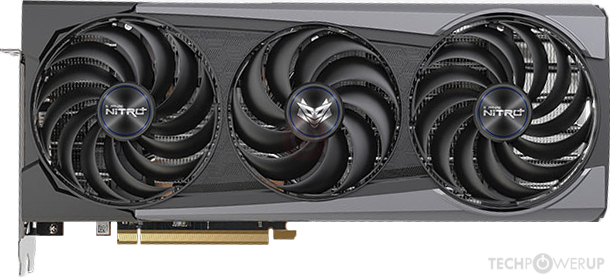- Joined
- Jun 1, 2010
- Messages
- 452 (0.08/day)
| System Name | Very old, but all I've got ® |
|---|---|
| Processor | So old, you don't wanna know... Really! |
XFX being in game, is actually a good thing.
The shroud and cooler design though... like others have mentioned, the RX7000 series cooler was pretty much amazing, and was on par with PowerColor one, and even could outperform Sapphire's Pulse and even Nitro+. Sleek, simple and robust design. I can't find the reason behind not putting it on RDNA4, besides the last being the temporary stop-gap solution. This particular 9070's design though, looks a bit cheap...
On the other hand, many AIBs like Asus, just seems to be partly re-usilng their previous TUF, ProArt, and other coolers for the RDNA4.
But seeing this many AIBs and partners having the ready products, gives an impression, that the HW part is ready for mass production, and RDNA4 mignt not be a scarce product. Since the AIB/partner wouldn't risk entering the R&D and production, for something that is going to have the supply constrains.
This might be a wishful thinking, but let's hope this is "just" the driver readiness issue.
Like some Pro design- simple sleek one, with robust VRM, but limited by having limited/no OC. Just reliable, energy efficient, two slot design, plug'n'play card.
Then some SFF ones, with even more compact design. Doesn't matter if it is OC and not, the cooler must be very efficient and compact. Might be limited to 150-200W as well.
And of course OC variants, for someone who used to burn the watts for fun. No limit, no efficiency models just for "extra" "free" fps, for those who dare.
This way, the companies would have every consumer type satisfied, instead of pushing the same triple-four slot triple fan chonkers under different shrouds, with basicaly zero diferences by design and price.
The shroud and cooler design though... like others have mentioned, the RX7000 series cooler was pretty much amazing, and was on par with PowerColor one, and even could outperform Sapphire's Pulse and even Nitro+. Sleek, simple and robust design. I can't find the reason behind not putting it on RDNA4, besides the last being the temporary stop-gap solution. This particular 9070's design though, looks a bit cheap...
On the other hand, many AIBs like Asus, just seems to be partly re-usilng their previous TUF, ProArt, and other coolers for the RDNA4.
But seeing this many AIBs and partners having the ready products, gives an impression, that the HW part is ready for mass production, and RDNA4 mignt not be a scarce product. Since the AIB/partner wouldn't risk entering the R&D and production, for something that is going to have the supply constrains.
This might be a wishful thinking, but let's hope this is "just" the driver readiness issue.
Like it was said before, the XFX RX7000 and even RX6000 were completely fine, by both visual design and thermal performance.This PNY is a beauty and an interesting design compared to that XFXThat XFX is the worst graphics card design ever. I had never seen something similar before.\
Just stay with Sapphire, ASRock.
I personally, would keep PCI-E slot for data only. Feeding the power-hungry graphics card by PCIE slot, would just bring an unnecessary, excessive strain on the wiring of motherboard, putting under the risk the integrity of entire PCIE bus. It's much wiser to feed the required power through additional 8-pin cables, that can be replaced along with the PSU itself, if something would go wrong. But that's just IMO.I guess kinda, reading up on it, to me, its kinda vague.
Like AMD when they released the RX480 it had a 6 pin connector but the card would often jump over 150 watts putting out of spec strain on the pci-e slot.
They got flack for that and did an update that fixed it.
With this MSI system claiming to be able to provide 168 watts from the slot alone...would that mean you can install an RX480 on there and just leave out the 6-pin connector?
It seems to me the boards of gpu's are made to expect power from certain regions...but either way, its nice that MSI makes some noise about this, but again, I just want the official PCI-E spec to change and be updated to deliver more power, so GPU's can be made with that in mind and just ship without extra connectors (or atleast that youdont have to hook those up to anything if you have a newer motherboard/psu etc.
There's absulotely no excuse, the AIBs do not make the 150/200/300W designs of each GPU SKU.Or even better: let's make GPUs under 200 W a thing again! At least in the midrange.
In my opinion, an entry-level card should have no power connector, a midrange one should have an 8-pin, and a high-end one two 8-pins. We don't need the new 12-pin standard, either.
It's not because electricity is expensive (it is, but that's besides the point), but because of all the heat it dumps into your case. It's unnecessary and excessive.
Like some Pro design- simple sleek one, with robust VRM, but limited by having limited/no OC. Just reliable, energy efficient, two slot design, plug'n'play card.
Then some SFF ones, with even more compact design. Doesn't matter if it is OC and not, the cooler must be very efficient and compact. Might be limited to 150-200W as well.
And of course OC variants, for someone who used to burn the watts for fun. No limit, no efficiency models just for "extra" "free" fps, for those who dare.
This way, the companies would have every consumer type satisfied, instead of pushing the same triple-four slot triple fan chonkers under different shrouds, with basicaly zero diferences by design and price.
Last edited:










